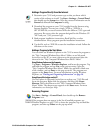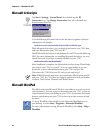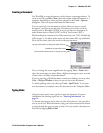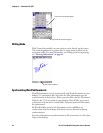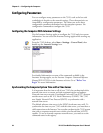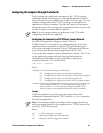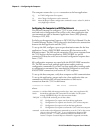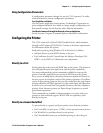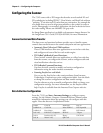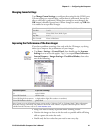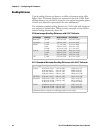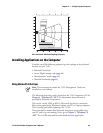
Chapter 3 — Configuring the Computer
751G Color Mobile Computer User’s Manual 37
Configuring the Computer through the Network
You can change the configuration parameters of the 751G by sending
commands through a host computer or through the network. If you are
using a network, you can configure one or more 751Gs at a time. You can
remotely configure the wireless 751G by sending a command from an
application on the host computer. Note that you cannot set all parameters
through the network. You can only set those commands that have a syntax in the
Intermec Computer Command Reference Manual.
Configuring the Computer in a TCP/IP Direct Connect Network
Use the host computer to configure a wireless 751G in a
TCP/IP network. To send and receive configuration data, write a host
application that can communicate with the 751G directly through an
access point or through the network. Use the TMF protocol to send and
receive transactions between the host application and the 751G.
To set up the host computer, verify communication with the 751G. To set
up the application, prepare and write a host application that can
communicate with the IAS and send transactions to and receive
transactions from the 751G in this format:
where:
Example
In the host application, you want to get the current values of two
configuration commands from the 751G. Send the
CG$+NABV transaction
from the host application.
where:
Note: You can continue running an application on the 751G while
configuring it from the host computer.
TMF field commands
TMF field is a 2-byte field containing one of these values:
CG Configuration Get request sent from the host application.
Cg Configuration Get response sent from the 751G to the host computer.
CS Configuration Set request sent from the host application.
Cs Configuration Set response sent from the 751G to the host computer.
commands are the reader and configuration commands to set on the 751G or the current
value to retrieve from the 751G. To save configuration changes in flash
memory, send the .+1 reader command as the last command. See the
Intermec Computer Command Reference Manual for a list of commands.
Note: The transaction header is not shown in this example. You do not
need a transaction header for a host application in a TCP/IP network, but
you do for a UDP Plus network.
CG is a TMF Configuration Get request.
$+ is the Change Configuration reader command.
BV is the Beeper Volume configuration command.



